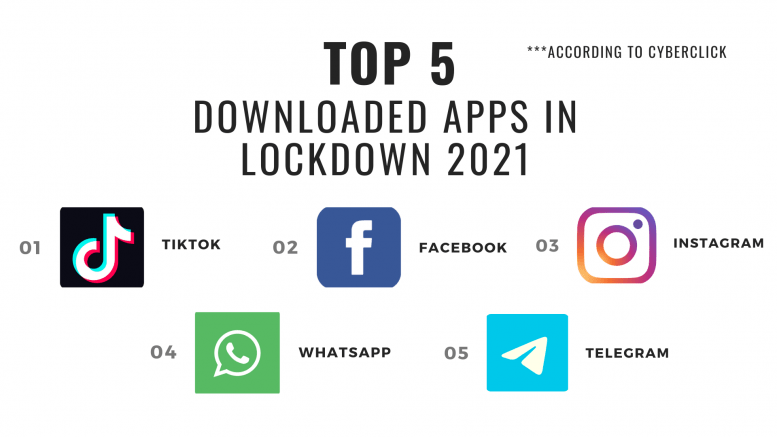Screen time across the globe had inevitably increased during the COVID-19 pandemic, especially during the lockdown period. Technology giants and researchers—such as EyeSafe—noted spikes in screen time numbers, some observing screen times as high as 13 hours a day in March of 2020.
Jasmine Batth, a senior, wasn’t surprised about the screen time increase.
“[Screens were] how we connected to friends and did assignments,” Batth said. “Social media, things like Twitter and TikTok—it was how I stayed connected and kept myself entertained.”
With nothing better to do, everyone turned to their screens for entertainment and ways to communicate with the rest of the world. According to Cyberclick, a digital marketing and advertising agency, the most downloaded apps during the pandemic as of May 2021 have been social media platforms, a predicted trend due to the lack of face-to-face communication.
Seniors Elaine Jin and Alayda Flick shared a similar sentiment as Batth. They both also referenced using their technology as methods of staying connected with their friends.
“You’re home all day and can’t meet up with your friends in person,” Jin said. “I always find myself video calling friends, scrolling through Instagram, or watching movies on streaming apps pretty often.”
“Throughout the pandemic, we haven’t had a lot of opportunities to be with friends in person and do in-person things. A lot of connections have been bridged off, so I think more people have turned to technology to try and gain back that normalcy,” Flick said. “I also think it probably increased because of boredom. Because we don’t have the opportunity to do something outside like shop or play a sport, we just go on our [phones] because it’s something to do. Technology is where we get the most of our entertainment, I think, so when the pandemic hit, we used it more and more to fill the time we wouldn’t usually have in different circumstances.”
Now, as vaccines are distributed and things slowly turn back to normal, screen time is becoming more of a common problem.
“I think [screen time] will decrease, but only somewhat,” Flick said. “I feel like I’ve developed a stronger dependency [on] my technology. It feels like I need my phone around to function more than I did before. I’m definitely making more plans to be with my friends outside in real life, and I’m sure a lot of other vaccinated people are doing the same, but I think the use of technology is going to remain prevalent for a little while longer.”
The COVID pandemic isn’t over yet, but the regulations and preventative measures are slowly being lifted. Although the lockdown had impacted how much time the world spent looking at their screens, only time will tell if the world can once again lower that time to a healthier average.
